Puerto rico united states: Council on Foreign Relations
History of Puerto Rico – 1900
1900 – 1949
1900
The island was surrendered to the United States military authority.
On April 2, the Foraker
Law, officially the Organic Act of 1900, is approved, establishing civil government
and free commerce between the island and United States. The law was
introduced into Congress by senator Joseph B. Foraker. Puerto Rico
became U.S. first unincorporated territory.
The new government had an American governor, with 5 Puerto Rican Cabinet members.
On March 4th, Federico Degetau takes office in Washington as the first Resident Commissioner from Puerto Rico.
On March 19, President McKinley asserts the need for free trade
with Puerto Rico.
On May 1, the first civil governor (Charles H. Allen) of the island under the Foraker
Act was inaugurated.
On June 5, President McKinley named an Executive Cabinet under
Gov. Charles H. Allen that included five Puerto Rican members–José
Celso Barbosa, Rosendo Matienzo Cintrón, José de Diego, Manuel
Camuñas and Andrés Crosas, and six U. S members–William H. Hunt,
S members–William H. Hunt,
Secretary; J.H. Hollander, Treasurer; J.R. Garrison, Auditor; W.B. Eliot,
Interiors; James A. Harlan, Attorney General; and Dr. M.G. Brumbaugh,
Secretary of Education.
The Department of Education was formed with Dr. M. G. Braumbaugh
(later governor of Pennsylvania) the first Commissioner of Education.
The method of of teaching was entirely in English with Spanish treated
as a special subject.
The Partido Federal (Federal Party) is founded.
The party campaigns for Puerto Rico to become one of the States in the United
States.
On July 4th, Beeckman Winthrop became the governor of Puerto Rico and served until 1907.
On November 6, the first elections under Foraker Act were
celebrated (registered voters 123,140).
On December 3, the first Legislative Assembly which met.
On December 11, during a visit to Puerto Rico, U.S. President Theodore Roosevelt
addressed the Puerto Rican Congress and recommended that Puerto Ricans become United States citizens.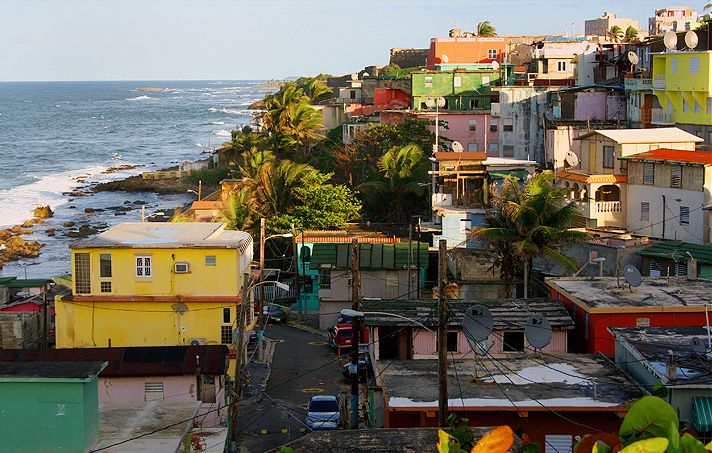
1901
The Hollander Law was approved, named after Puerto Rico’s US-appointed Treasurer, Jacob Hollander. The law impose
a %1 tax on land, it exempted lands priced below $100 and thus fell squarely on middle- and high-income landowners.
The implementation of this law coincided with an artificial devaluation of the Puerto Rican Peso by US authorities, each
peso valued at 60 American cents: a currency devaluation of 40%.
On March 4, Federico Degetau takes
office in Washington as the first Resident Commissioner from Puerto Rico.
On June 30, the Porto Rico Provisional Regiment of Infantry was organized to enable Puerto Ricans who lived in the island to
serve in the military, while Puerto Ricans who resided on the mainland
served in regular units of one of the following branches of the United States military, the United States Marine Corps, Army or the Navy.
The United States implemented the policy of military segregated units in
Puerto Rico. Puerto Ricans of African descent were assigned to
segregated all-black units and were subject to the discrimination which was rampant in the U. S. in those days, such as the 375th Regiment.
S. in those days, such as the 375th Regiment.
1902
The Porto Rico Telephone Company was inaugurated.
Cuba declares independence; United States declares Puerto Rico a
territory.
On November 4, the second elections under Foraker Act were
celebrated (registered voters 158,924).
The Official Languages Act (under the Foraker Act) was instituted which declared
that in all insular governmental departments, courts, and public offices,
English was to be regarded as co-official with Spanish, and when necessary, translations and
interpretations from one language to the other would be made so that all parties
could understand the proceedings.
1903
University of Puerto Rico
On January 17, U.S. officially designates Luquillo Forest Reserve the only
tropical rain forest in the National Forest System, the first created by
President Theodore Roosevelt.
University of Puerto
Rico is founded.
Roosevelt signed an executive order to surrender the Culebra to
Navy Control.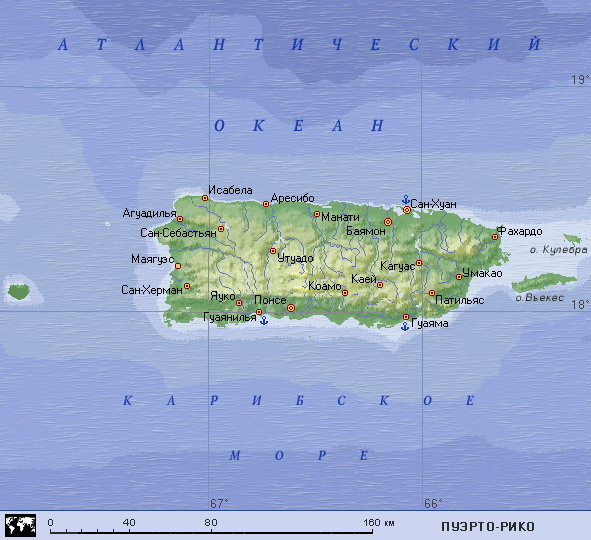
1904
Luis Muñoz Rivera and José de Diego founded the Partido Unionista
de Puerto Rico (Unionist Party of Puerto Rico) to fight against the colonial
government established under the Foraker Act (reformation of the Federal
Party).
On July 4, Beeckman Winthrop became the governor of Puerto Rico
and served until 1907.
First universal suffrage was established, men over 21 years old
were allow to participated.
1905
On March 9, a law establishing the official coat of arms was signed.
The original coat of arms was granted by the Spanish Crown in 1511.
1906
The Federacion Libre de Trabajadores (Free Federation of Puerto Rican) is
founded, which was affiliated with the American Federation of Labor. Led by
Santiago Iglesias, among others.
On November 6, President Theodore Roosevelt leaves Washington D.C. for a
17 day trip to Panama and Puerto Rico, becoming the first president to
make an official visit outside of the U.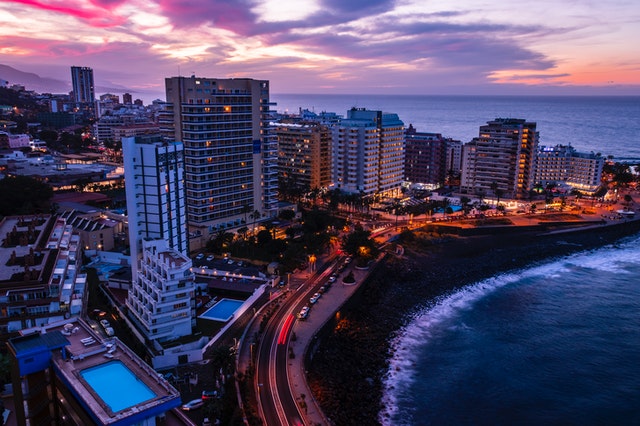 S.
S.
On December 11, during a visit to Puerto Rico, U.S. President
Theodore Roosevelt addressed the Puerto Rican Congress and recommended
that Puerto Ricans become United States citizens.
1908
Driving licenses began to be issued.
The first motion picture projector was brought to the island. It
is used in a tent theater called “Cine Puerto Rico“.
1909
The Olmsted Amendment to the Foraker Act was passed by both houses of
Congress, this act placed the supervision of Puerto Rican affairs in the
jurisdiction of an executive department to be designated by the
president. The legislation was a response to a governmental crisis in
Puerto Rico in early 1909.
1910
The U.S. Census Bureau reported that the island’s total population was counted as
1,118,012, an increase of 17%.
This was the second population census held in Puerto Rico by the U.S. Census Bureau.
1911
The College of Agriculture and Mechanic Arts was founded in Mayag¨uez.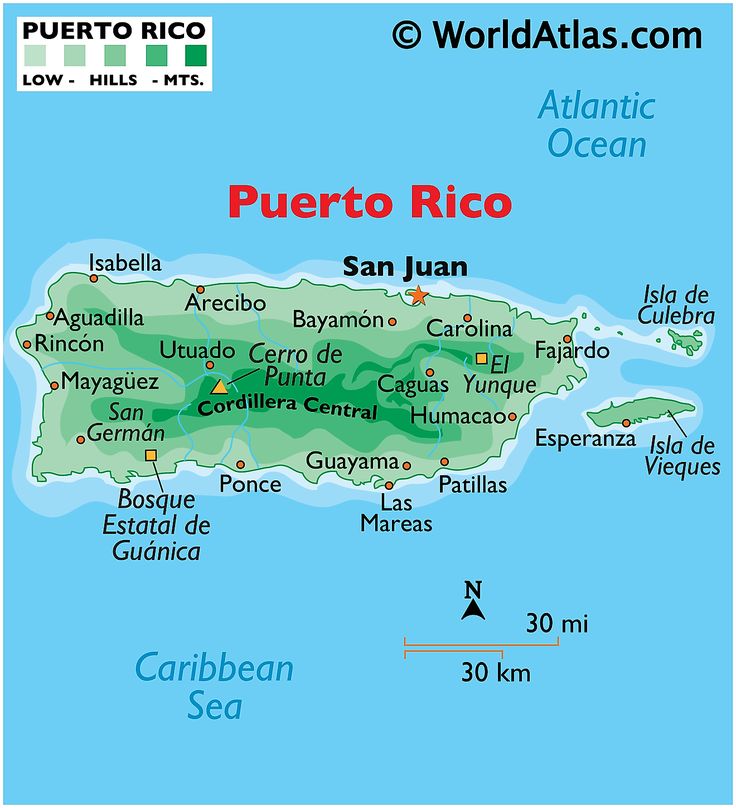
Today it is known as the University of Puerto Rico – Mayagüez Campus
(UPRM), considered the leading science and engineering institution
in the Caribbean.
1912
On June 29, The Inter American University was established by the United
Presbyterian Church. The IAU is a private, nonprofit institution. The
system includes schools of law and optometry.
Rosendo Matienzo Cintrón, Manuel Zeno Gandía, Luis Llorens Torres,
Eugenio Benítez Castaño, and Pedro Franceschi founded the Partido
Independentista (Independence Party) which was the first party in the history
of the island to exclusively want Puerto Rican independence. Though
short-lived, it established a precedent for future organizations with similar
ideologies.
1914
The first Puerto Rican officers are assigned to the Executive Cabinet,
allowing islanders a majority. The officers were Martin Travieso,
Secretary, and Manuel V. Domenech, Commissioner of Interiors.
The first postal savings bank was opened in San Juan.
The first public coin telephone was installed, operator-assited calls
and the charge for a call was 5 cents. (The first public coin telephone in the
world was installed by William Gray in Hartford, Conn in 1889.)
1915
A delegation from Puerto Rico, accompanied by the Gov. Arthur Yager,
traveled to Washington in order to ask Congress to grant the island more
autonomy.
1916
On December 5, the Jones Act is
approved.
On August 22, a hurricane strikes the island.
1917
On March 2,
President Woodrow Wilson signed the Jones-Shafroth Act, best known as Jones Act.
With this law:
- Puerto Rico became a territory of the United States (“organized but
unincorporated,”) - A bill of rights was created.
- Separated the three governmental powers into: the legislative,
executive and judicial branches. - United States granted Puerto Ricans U.S. statutory citizenship, which means
that Puerto Ricans were granted citizenship by act of Congress, not by the
Constitution and citizenship is therefore not guaranteed by it. (The Puerto
(The Puerto
Rican citizenship ceased, it was not until 1927 that it was reestablished for
residency purposes only.)
As citizens, they were now allowed to
join the army, only 300 rejected the citizenship and many
others refused to join the army. During World War I, over 18,000 Puerto
Ricans served. - Established that elections were to be celebrated every four years.
- English is decreed the official language of Puerto Rico.
On the other hand, the Foraker Act still determined economic and fiscal aspects of government.
On April 6, the U.S. joined its allies–Britain, France, and Russia–to fight in World War I.
On May 18, U.S. President Woodrow Wilson signs compulsory military
service act into law. The act required all men in the U.S. between the ages of 18 and 32 to register for military service,
excluding the territories of Alaska, Hawaii, and Puerto Rico.
On May 20, the Puerto Rican Legislature extends the draft to the island.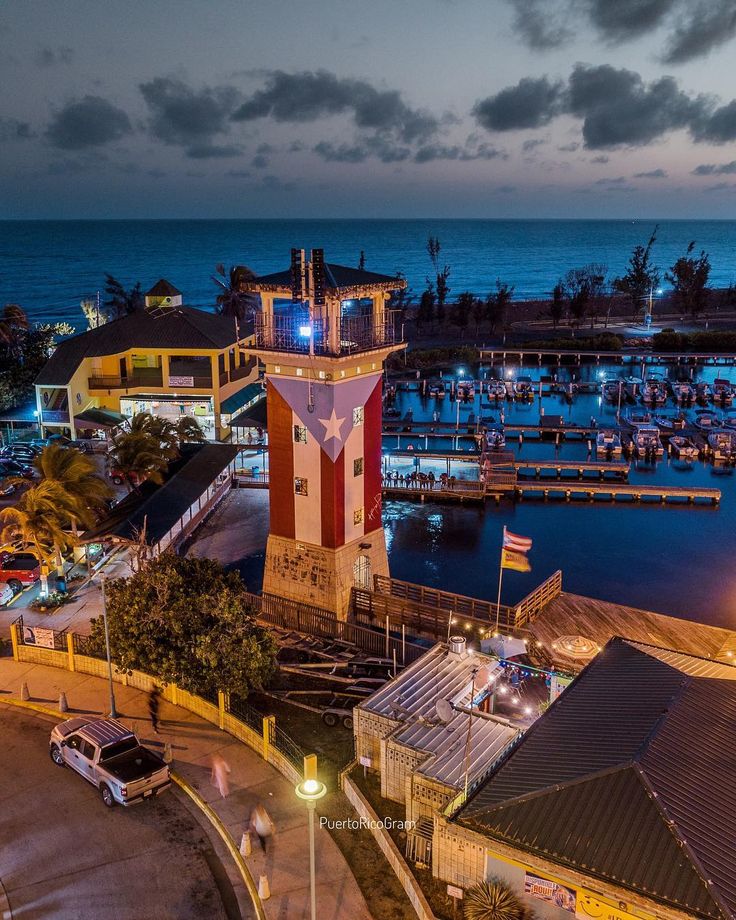
20,000 islanders are drafted into World War I.
On July 6, the first elections under Jones Act were celebrated.
The Organic Act was approved. This gave the island a legislature
(19 senators, 39 representatives) elected freely by the Puerto Rican
people.
1918
“El Imparcial” newspaper is founded.
On October 11, an earthquake occurred, with an approximate magnitude of
7.5 on the Richter scale
and was accompanied by a
tsunami
which got up to 6 meters
(19.5 feet) high. The epicenter was located northwest of Aguadilla in the
Mona Canyon (between Puerto Rico and the Dominican Republic), causing great
damage and loss of life in Mayagüez, and lesser damage along the west
coast. The tremors continued for several weeks.
1919
The Puerto Rican National Guard is founded, by MG Luis Esteves who was
the first Puerto Rican Graduate of West Point.
“El Mundo” newspaper is founded.
The U.S. Army Reserve Officers Training Corps (ROTC) program was created.
ROTC was originally compulsory for university students, but became voluntary
after 1960.
150 die at the Teatro Yaguez fire.
1920
On June, the Partido Socialista Puertorriqueño (Socialist Puerto
Rican Party) is founded,
led by Santiago Iglesias Pantín.
Santiago Iglesias Pantín was elected senator, becoming the first
Socialist senator, and marking the rise of the Socialist Party as a major party
in insular politics.
1921
Emmet Montgomery Reilly was appointed governor of Puerto
Rico. (1921-1923) Montgomery is one of the most hated governors.
On June 3, during President Harding’s term, the Johnson Act was passed. The act
establishes immigration quotas, restricted the immigration of
Europeans to the United States. The quota system was based on
3% of existing foreign-born nationality’s population in US.
As a result, the availability of jobs for Puerto Ricans
choosing to migrate to the United States increased.
1922
In the case of Balzac v. Porto Rico (258 U.S. 308) the U.S. Supreme Court
Porto Rico (258 U.S. 308) the U.S. Supreme Court
declared that Puerto Rico was a territory rather than a part of the
Union. The decision stated that the U.S. constitution did not apply in
Puerto Rico.
On September 17, the Partido Nacionalista de Puerto Rico (Puerto Rican
Nationalist Party) is founded.
On December 3, the first radio station WKAQ was inaugurated.
1925
The construction on the Capitol Building began.
Fort Buchanan was established in 1925, originally named Fort Miles.
1926
On July 23-27, a hurricane strikes the island.
1928
On September 13, Hurricane Saint Phillip II (“San Felipe II”) strikes the
island. Three hundred people were killed.
Charles Lindbergh visited the island in his plane Spirit of St.
Louis.
1929
With the Wall Street stock-market crash of 1929 precipitated the Great
Depression, the worst economic downturn in the history of the United States. The
depression had devastating effects on the island, creating widespread hunger and
unemployment. Many banks couldn’t continue to operate. Farmers fell into
Many banks couldn’t continue to operate. Farmers fell into
bankruptcy. The Depression lasted over a decade.
On January 9, Pan Am Airline started the first flights to Miami.
The Air Mail postal service was inaugurated.
Women were given the right to vote, but only to women
who knew how to read and write.
1930
Pedro Albizu Campos was elected president of the Nationalist Party.
1931
On September 10-16, Hurricane Saint Nicholas strikes the island.
1932
On May 17, the Congress of United States approved a law to change back
the name of the island Porto Rico, to its original name, Puerto Rico.
On September 30, Hurricane San Ciprián strikes the
island. Two hundred people were killed, a thousand injured, and property damage
reached $40,000,000.
1933
Blanton Winship was appointed Governor of Puerto Rico, Elisha Francis
Riggs Chief of Police, and Robert A. Cooper Judge of the Tribunal of the
United States in Puerto Rico.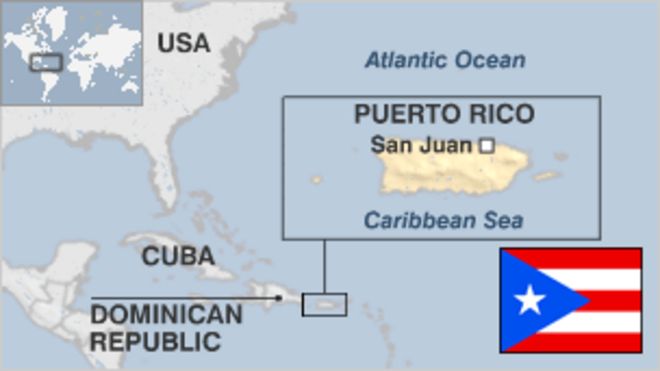
The program for economic assistance known as Puerto Rican Emergency Relief
Administration (PRERA) begins to be implemented.
Sixto Escobar became the first Puerto Rican to win a boxing
championship of the National Boxing Association.
On May 9, cockfighting was legalized in Puerto Rico.
1934
Franklin D. Roosevelt visited the island.
Commissioner of Education José Padín agreed to adopt Spanish as
the language of instruction in the elementary grades, up to grade eight. In
subsequent grades, including higher education, English would continue as the
language of instruction.
1935
On May 28, President Franklin D. Roosevelt created the Puerto Rican
Reconstruction Administration (PRRA), which provided for agricultural
development, public works, and electrification of the island.
The Sixto Escobar Stadium was inaugurated.
1936
On February 23, Puerto Rican Nationalists Hiram Rosado and Elias
Beauchamp, in retaliation for the University Massacre (“Masacre of Rio
Piedras”), kill Police Chief Riggs in San Juan.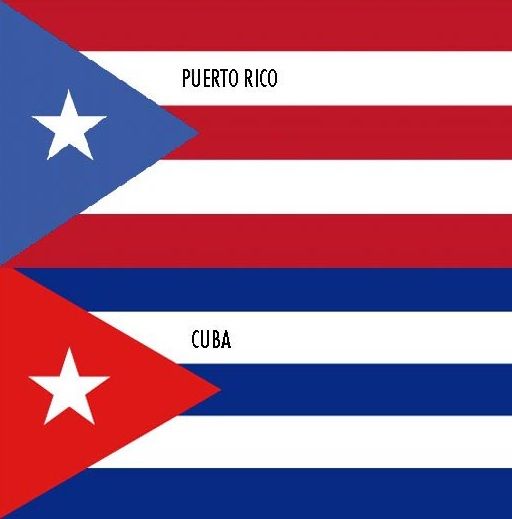 They are captured and
They are captured and
killed in the police headquarters of Old San Juan.
On July 31, Pedro Albizu Campos, Juan Antonio Corretjer, Clemente
Soto Vélez and other Nationalists sentenced to 6-10 years in federal
prison.
Women given full suffrage.
Bacardi y Compañía was established by the Bacardi
family in Puerta de Tierra.
1937
At the beginning of Nacionalista de Puerto Rico Party
parade, in Ponce, occurred as called
“Masacre de Ponce” were 20 people are killed
and 100 people are wounded.
Pedro Albizu Campos and other Nationalists are transferred out of
Puerto Rico to serve time in Atlanta, Georgia.
The Mercedita airport in Ponce started operations.
President Franklin Roosevelt proclaimed every October 12 as
Christopher Columbus Day.
1938
The Partido Popular Democratico (Democratic Popular Party) was founded,
under the leadership of Luis Muñoz Marín, which adopted the
slogan “Bread, Land, and Liberty.” The party favored independence for the
country in its initial stages.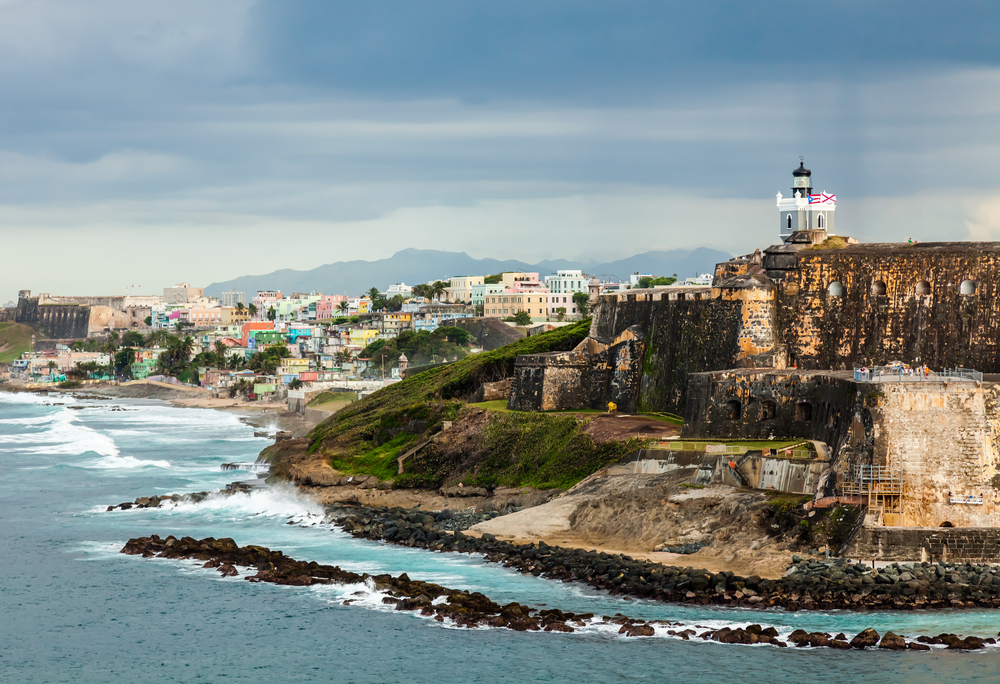
The Cervecería India was inaugurated.
1939
The U.S. Navy purchased 27,000 acres of land on Vieques Island.
World War II was the biggest and deadliest war in history, involving more than 30 countries.
Sparked by the 1939 Nazi invasion of Poland, the war dragged on for six years until the Allies defeated Nazi Germany and Japan in 1945.
1940
With the 1940 U.S. Nationality Act, which became effective January 13,
1941, ratified by the Nationality Law in 1952, the Congress amended the statute
on naturalization, expanding the applicability of the jus soli rule to
Puerto Rico. Under this Act, all persons born in Puerto Rico after that date
are considered U.S. citizens and, therefore, their U.S. citizenship
is protected under the 14th Amendment of the U.S. Constitution.
(In 1917, U.S. citizenship granted to Puerto Ricans was a naturalized
legislative or statutory citizenship (Congress can revoke statutory
citizenship under certain conditions). )
)
Camp Santiago in Salinas was established as a Puerto Rican National Guard
training facility.
1941
United States began to establish military bases in the
islands of Culebra and Vieques.
The Roosevelt Roads Naval Station is one of the largest naval facilities
in the world, covering about 32,000 acres and encompassing three harbors and
two-thirds of the island of Vieques.
President Franklin D. Roosevelt appointed Rexford Guy Tugwell
as governor of Puerto Rico (1941-1946).
The Ponce Cement Corporation was founded and started operations in
Ponce.
1942
The Banco Gubernamental de Fomento was founded.
Puerto Rico Industrial Development Company was established.
On May 11, the 188 Law was signed, the law regulates a industrial
development program, better known as the “Manos a la Obra” (Hands to
work), under the direction of pharmacist Teodoro Moscoso and the Industrial
Company of the Development. ICD became the main promoter of the economic
development in Puerto Rico.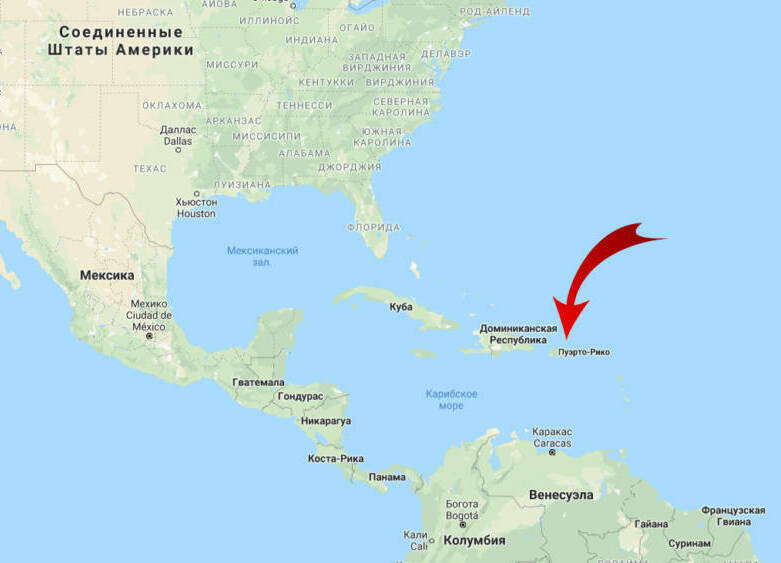
Hiram Bithorn (Chicago Cubs) became the first Puerto Rican to play in the
Major Leagues.
1943
On April 2, U.S. Senator Tydings introduces bill to Congress calling for
independence for Puerto Rico.
The U.S. Postal Service issued an stamp to commemorate the 450th
anniversary of Columbus’ landing on Puerto Rico.
During World War II, the Army’s 65th Infantry Regiment, a segregated Hispanic unit
made up primarily of Puerto Ricans, nicknamed “Borinqueneers” (special designation), was
sent to Panama to protect the Pacific in 1943, and by 1944, was sent to France.
They participated in the battles of Naples-Fogis, Rome-Arno, central Europe and Rhineland.
The regiment had 23 soldiers killed in action.
During that time, it is estimated by the Department of Defense that 65,034 Puerto Ricans served in the U.S. military.
1945
Puerto Ricans began to emigrate to United States, looking for job and better
economic situation.
1946
On July 7, Pan American Airlines starts non-stop flights to New York.
On July 21, President
Harry Truman designates native born Jesús T.
Piñero governor, becoming the first Puerto
Rican to govern the island.
The Partido Independentista Puertorriqueño (Puerto Rican Independence
Party) was founded.
The Caribbean National Forest, commonly known as “El Yunque” was
designated an insular wildlife refuge.
A bill was passed ordering “the exclusive use of the Spanish language for
teaching in all public schools.”
1947
On August 5th, United States Congress passed the Elective Governors Act,
allowing Puerto Ricans to elect their own governor, President Harry Truman
signed the act.
More than 20 airlines provide service between San Juan, Puerto
Rico, and Miami, and San Juan and New York.
1948
Pedro Albizu Campos was invited to speak at the University of Puerto Rico in
Rio Piedras by its students. The Rector Jaime Benitez is against the invitation. A strike
is held in the University of Puerto Rico, which lead to violent police
repression.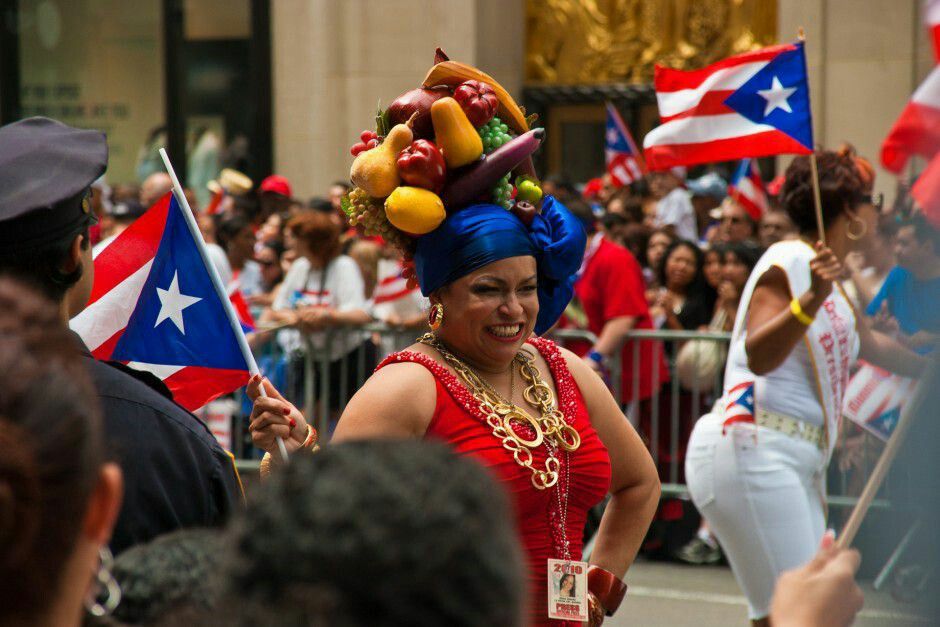
The first Olympic participation of Puerto Rico took place in London and
boxer Juan Evangelista Venegas brings home Puerto Rico’s first Olympic medal, a
bronze one.
On June 10, the Puerto Rican legislature approved the infamous Law 53, known as “La Ley de la
Mordaza” (Gag Law). The law made it illegal to
display a Puerto Rican flag, to sing a patriotic tune, to talk of independence, and of course to fight for
the liberation of the island. It was also known as “the Little Smith Act” because it was patterned after a
similar fascist law passed for the mainland.
On August 15, gambling was legalized in Puerto Rico.
Luis Olmo (Los Angeles Dodgers) became the first Puerto Rican to play in a
World Series game and the first one to hit a Home Run and to get three hits,
in the same game.
On November 2, the first popular elections for Governor of Puerto Rico take
place. Luis Muñoz Marín was elected, with 61.2% of the vote.
Luis Muñoz Marin campaigned for economic reforms and structural changes
in the political relationship between the U. S. and islanders. Marin and other
S. and islanders. Marin and other
political leaders considered agricultural countries to be underdeveloped and
industrial countries developed, manufacturing was seen as the means by which
Puerto Rico could develop economically. As a consequence the government
launched an industrialization program known as “Operation Bootstrap.”
Under this program the island was to become industrialized by providing labor
locally, inviting investment of external capital, importing the raw
materials, and exporting the finished products to the U.S. market.
The Statehood Republican Party was founded.
The Catholic University of Puerto Rico was founded. It has
faculties of arts and humanities, science, education, business, and law.
Puerto Rico sends the first delegation to the Olympics.
1949
Caribe Hilton Hotel was inaugurated. (Fomento invested
more than $7 million dollars.) Hilton becomes the first international hotel
chain with the opening of the Caribe Hilton in San Juan.
San Juan National Historic Site was established.
Previous
Next
Other Resources
- Act Jones, Carta Orgánica de 1917
- Jus Soli Citizenship
- Ley Foraker del 1900
- Tax All the Fat People: The History of Taxes in Puerto Rico
- U.S. Tax Imperialism in Puerto Rico
Puerto Ricans speak out on US territory’s political status
By DÁNICA COTOJune 4, 2022 GMT
SAN JUAN, Puerto Rico (AP) — Hundreds of Puerto Ricans crowded into a convention center Saturday where federal legislators held a public hearing to decide the future of the island’s political status as the U.S. territory struggles to recover from hurricanes, earthquakes and a deep economic crisis.
One by one, dozens of people ranging from politicians to retirees to young people leaned into a microphone and spoke against the island’s current territorial status, which recognizes its people as U.S. citizens but does not allow them to vote in presidential elections, denies them certain federal benefits and allows them one representative in Congress with limited voting powers.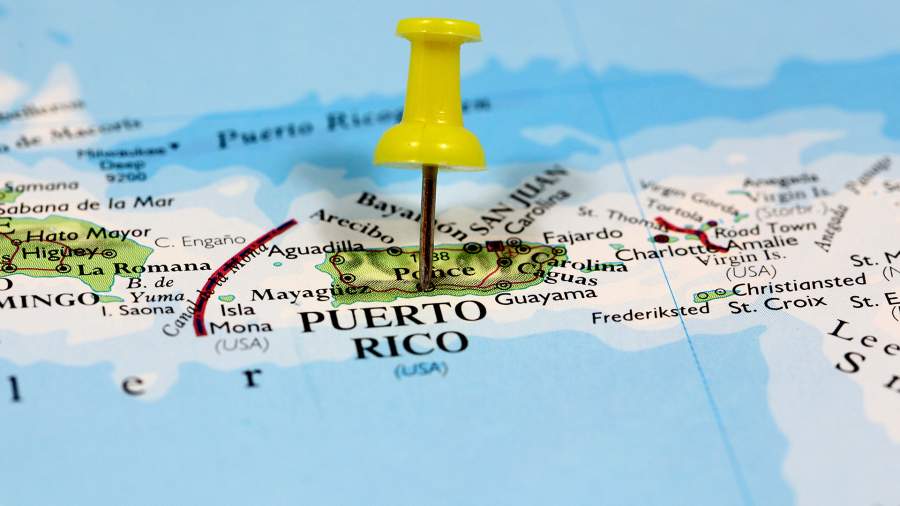
The hearing comes two weeks after a group of Democratic congress members including the House majority leader and one Republican proposed what would be the first-ever binding plebiscite that would offer voters in Puerto Rico three options: statehood, independence or independence with free association, whose terms would be defined following negotiations.
ADVERTISEMENT
Congress would have to accept Puerto Rico as the 51st state if voters so choose it, but the proposal is not expected to survive in the Senate, where Republicans have long opposed statehood.
2022 Midterm elections
Craft deflects questions about Trump as she files for Ky gov
Stabenow’s retirement scrambles Michigan Senate race in 2024
NH Dems ask national party not to ‘punish’ them on primary
GOP lawmaker seated despite NYC residency questions by Dems
“Everyone, even congress people themselves, know that the possibilities of this becoming law are minimal and maybe non-existent, but it doesn’t stop being important,” former Puerto Rico governor Aníbal Acevedo Vilá told The Associated Press.
About an hour into the hearing, a small group of people including a former gubernatorial candidate who supports independence burst into the ballroom, pointed fingers at the panel of U.S. legislators and yelled, “120 years of colonialism!”
The majority of the audience booed the group and yelled at them to leave as U.S. lawmakers called for calm.
“Democracy is not always pretty, but it’s necessary,” said Rep. Raúl Grijalva of Arizona, chairman of the U.S. House of Natural Resources Committee, which oversees affairs in U.S. territories.
The proposal of a binding plebiscite — a measure that has not yet been introduced in committee — has frustrated some on an island that already has held seven unilateral, nonbinding referendums on its political status, with no overwhelming majority emerging. The last referendum was held in November 2020, with 53% of votes for statehood and 47% against, with only a little more than half of registered voters participating.
Luis Herrero, a political consultant, said during the hearing that even if enough people support statehood, there are not enough votes in the Senate to make Puerto Rico a state: “Not today, not yesterday, not tomorrow. Since 1898, Puerto Rican statehood has been a mirage, lip service to score cheap political points or to raise a few dollars for a campaign.”
Since 1898, Puerto Rican statehood has been a mirage, lip service to score cheap political points or to raise a few dollars for a campaign.”
Saturday’s hearing comes amid ongoing discontent with Puerto Rico’s current political status, with the U.S. Supreme Court further angering many in April after upholding the differential treatment of residents of Puerto Rico. In an 8-1 vote, the court ruled that making Puerto Ricans ineligible for the Supplemental Security Income program, which offers benefits to blind, disabled and older Americans, did not unconstitutionally discriminate against them.
ADVERTISEMENT
As a result, many of those who spoke at Saturday’s public hearing welcomed the proposed binding plebiscite.
“We finally see the light at the end of the tunnel,” said Víctor Pérez, a U.S. military veteran who lamented the current political status. “Even after all our service and sacrifice, we come back home and we are denied full voting rights and equality. … We cannot vote for our president, our commander in chief, (but) they send us to war. ”
”
Grijalva said the testimonies given Saturday will help him and other legislators revise the proposed measure, which he said is a way to make amends. He said he hopes it will go to the House floor by August. If eventually approved, it would be held on Nov. 5, 2023.
Acevedo, the former governor, said he hasn’t lost hope despite numerous attempts throughout the decades to change the political status of Puerto Rico, which became a U.S. territory in 1898 following the Spanish-American War.
“A solution to this problem of more than 120 years has to happen at some point,” he said. “When will conditions allow for it? That’s unpredictable.”
Puerto Rico wants to become a state
Puerto Ricans voted in a referendum whether they want to join the US as a full 51st state.
Simultaneously with the presidential elections in the United States, various local elections and referendums were held in various American states and territories associated with the United States. Residents of Puerto Rico answered the question of whether they want to join the United States as a full 51st state.
Residents of Puerto Rico answered the question of whether they want to join the United States as a full 51st state.
This Caribbean island nation has the status of an “unincorporated organized territory” administered by the United States but not an integral part of it. The effect on the territory of Puerto Rico of the US Constitution is limited and the island has its own system of self-government. The connection with the US lies in the presence of common citizenship, currency and defense. The current status of the island of Puerto Rico, which came under US control as a result of the war with Spain in 1898, has been in effect since 1917, but not all politicians and lawyers seem certain. nine0003
This was the fourth referendum in half a century on the status of Puerto Rico. But never before have the supporters of changing the island’s status managed to win such a large majority of the vote, and more than five percent of voters have never voted for complete independence of Puerto Rico.
This time the majority of the inhabitants of the island nevertheless spoke in favor of changing their country’s relations with the United States. 53 percent of voters voted for it.
When asked exactly how they think Puerto Rico’s relationship with the United States should be built, 65 percent said they would prefer Puerto Rico to become a state, 31 percent said their island should join free association with the United States, and only four percent were in favor of creating a fully independent state. nine0003
Puerto Ricans are US citizens. They can vote for candidates of one or the American party in the primary elections and have their own representative in Congress. However, Puerto Ricans do not have the right to vote in US presidential elections. Many Puerto Ricans see this as a disgraceful remnant of colonialism.
We don’t want to be a colony and we want to have all the rights that other US citizens have, said Thomas Rivera Schatz, president of the Senate of Puerto Rico. nine0003
nine0003
Puerto Rico Minister of Commerce Joche Pérez Riera agrees. Here’s what he said in an interview with Fox television.
– We have been a US territory for over a hundred years. We are American citizens, but we are denied the right to vote in presidential elections. We want to have all the rights that other American states have.
But it’s one thing to want to become a US state, and another to be accepted into the US. This requires a decision by the US Congress. These powers are granted to him by the fourth article of the Constitution. nine0003
Until now, Congress has not considered convincing arguments in favor of the admission of Puerto Rico to the United States, even though a number of American presidents, including Gerald Ford, Ronald Reagan and George W. 51st state.
President Barack Obama, who has just been re-elected for a second term, does not object to this either. Prior to the Puerto Rican vote, he expressed the view that Congress would decide the status issue based on the results of the referendum. nine0029 For us, the question is, if the referendum in Puerto Rico shows that a significant number of the inhabitants of the island are in favor of a change in status, then Congress will certainly take this into account. If the results are not very convincing, then Congress is unlikely to be inclined to change the current situation and maintain the status quo.
nine0029 For us, the question is, if the referendum in Puerto Rico shows that a significant number of the inhabitants of the island are in favor of a change in status, then Congress will certainly take this into account. If the results are not very convincing, then Congress is unlikely to be inclined to change the current situation and maintain the status quo.
How convincing the results of the last referendum in Puerto Rico will be considered by Congress, and when it will consider this issue is currently unknown. nine0003
Russian Service RFE\RS
Married in America. Puerto Rico Flowers
Friday ,
No. 13 dated April 10, 2015 ,
#Life ,
Married in America ,
#Mir
Irkutsk journalist Marina Lykova, who married an American a few years ago, continues to tell readers of Pyatnitsa interesting things about life in the USA and about her marriage.
 nine0053
nine0053
I fell in love with Puerto Rico as soon as I saw it. I’m sure someone will certainly ask: “Well, where is it?” or even “What is it?”. Puerto Rico is an island near the Bahamas, and before visiting here, I did not know that the oldest city in the United States is located … in Puerto Rico. San Juan is the capital of Puerto Rico. Rich in beauty, a tropical island with a rich history in the heart of the Caribbean is a US-administered territory. And here, as on the mainland, everyone speaks Spanish. The American dollar is in use here, you don’t have to pay more for mobile services here than in America itself, and for sending a postcard to a friend from the island to big America, I forked out on postage stamps worth 50 cents, as if I were sending it to a neighboring street in Idaho Pocatello. nine0003
The first thing I saw when I stepped off the ship was the largest fortress in the Americas, the fortress of San Juan. It began to be built 15 years after Christopher Columbus discovered the island of Puerto Rico during his second trip to America.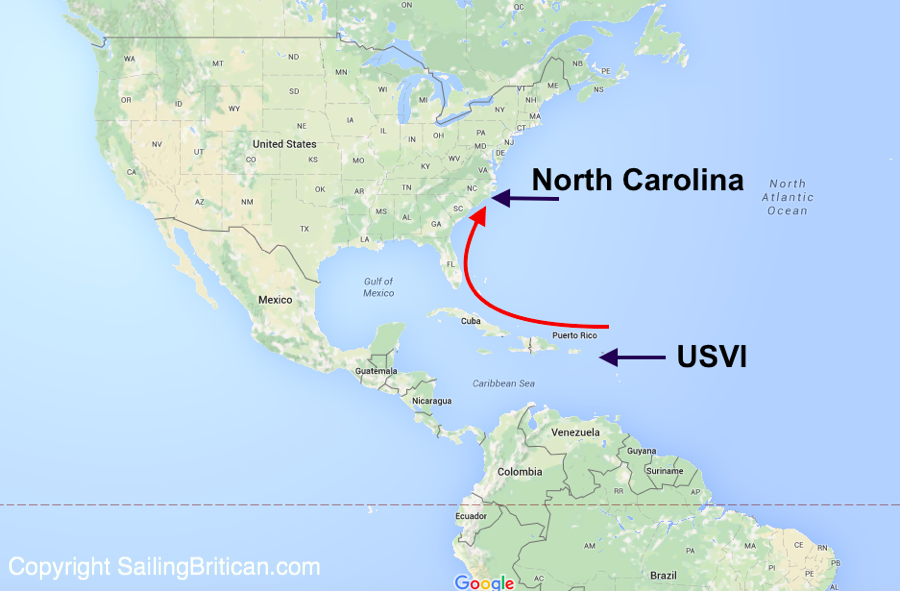 The walls of the fortress encircle the Old City, stretching for about seven kilometers. Arches. Citadels. Moves. Protection levels. In general, if you like castles and fortresses, then you are in Puerto Rico without fail! And also if you are ready to fork out for not the most expensive and elegant hotels at a price of 190 to $375 per night, without breakfast, and if you do not cry at every step that “But Mexico is much cheaper!” (Here you need to be prepared for the fact that breakfast and dinner will cost at least $ 40. For one person) – you are definitely here! In general, I realized this: the capital of Puerto Rico attracts not just anyone, but already full and more demanding “pedigreed gourmets”, if I can say so at all, speaking about travelers. True, Puerto Rico has two seasons – wet and dry. Prices for everything tourist very much depend on these same seasons: in the rainy months – April and November – everything here becomes cheaper as if by magic. nine0003
The walls of the fortress encircle the Old City, stretching for about seven kilometers. Arches. Citadels. Moves. Protection levels. In general, if you like castles and fortresses, then you are in Puerto Rico without fail! And also if you are ready to fork out for not the most expensive and elegant hotels at a price of 190 to $375 per night, without breakfast, and if you do not cry at every step that “But Mexico is much cheaper!” (Here you need to be prepared for the fact that breakfast and dinner will cost at least $ 40. For one person) – you are definitely here! In general, I realized this: the capital of Puerto Rico attracts not just anyone, but already full and more demanding “pedigreed gourmets”, if I can say so at all, speaking about travelers. True, Puerto Rico has two seasons – wet and dry. Prices for everything tourist very much depend on these same seasons: in the rainy months – April and November – everything here becomes cheaper as if by magic. nine0003
Pink, blue, purple and yellow, blue and green buildings with carved iron bars on windows and balconies attract the eye everywhere.
 Plaza. Fountains. Palms. Flower beds. Sea of birds. Bird Paradise! And right there, a couple of steps from the center of the capital, there are beaches, beaches, beaches…
Plaza. Fountains. Palms. Flower beds. Sea of birds. Bird Paradise! And right there, a couple of steps from the center of the capital, there are beaches, beaches, beaches…
What else does someone who wants to fall on a hot golden sand in the shade of a palm tree need? Souvenirs! The central streets of San Juan are littered with souvenirs, and therefore the Puerto Ricans themselves call this area a “trap for tourists.” I got caught willingly and easily: I bought several T-shirts with the name of the country in full chest as a gift to friends for only $ 3 apiece. For some reason, they like to portray two roosters here, who don’t seem to be fighting … On the streets, in addition to magnets, shell beads, swimsuit hats and other tourist rubbish, you can also buy used books. In the neighborhood there are trading houses of world famous brands, but they are not interesting to me. As, however, and souvenir blockages. I prefer to look at the balconies of residential buildings of those who can afford not to live in the slums and have . .. a balcony. Myriads of bright colors, stucco and wrought-iron lattices – like in a kaleidoscope. nine0003
.. a balcony. Myriads of bright colors, stucco and wrought-iron lattices – like in a kaleidoscope. nine0003
I heard that more than half of Puerto Ricans dream of their green island becoming the 51st state of America, but I doubt it very much: who would want to pay taxes in the same amount as their law-abiding Americans pay? Moreover, in order to taste American life, having moved to the United States for permanent residence, a Puerto Rican does not need to make any extra efforts: citizens of Puerto Rico do not need a visa to the States. I know firsthand that it’s easier for Puerto Ricans to change their warm and inviting island to the country of Uncle Sam for the residents of Puerto Rico: I worked side by side with a guy from Puerto Rico at my previous place of work. He just bought a plane ticket and ended up in snowy Idaho. He was hired immediately. And here he is one of the best hard workers, groovy and always dancing (they are as if on hinges), he speaks equally great both in Spanish and in English, and outwardly he looks like Obama in general. At first, the people, seeing him in a suit and a white shirt, fell into a stupor, and then ran to be photographed, which confused my dark-skinned Latin friend a lot. nine0003
At first, the people, seeing him in a suit and a white shirt, fell into a stupor, and then ran to be photographed, which confused my dark-skinned Latin friend a lot. nine0003
Traveling without tasting the local cuisine is wrong.
I had been in Puerto Rico only a few hours so far, but I was already hungry: my stomach, stretched out from incessant eating in well-fed America, was used to being stuffed to the point of pain in the chest. A cocktail of rum, baby coconut water, sun-soaked pineapple juice and a mixture of other fruit juices has nothing to do with those that are generously injected with furious chemistry (supposedly for color and taste). The swarthy waiter who brought the order did not forget to mention that the lettuce leaves are grown right here on the island, without the addition of chemicals. And also local fish and stewed vegetables, and in addition to the taste kaleidoscope – watermelon, avocado and papaya salsa. I’m trying to enjoy Puerto Rico like a true gourmet and don’t swallow everything all at once and lump, but savor, roll in my mouth, suck and break off in a tiny piece.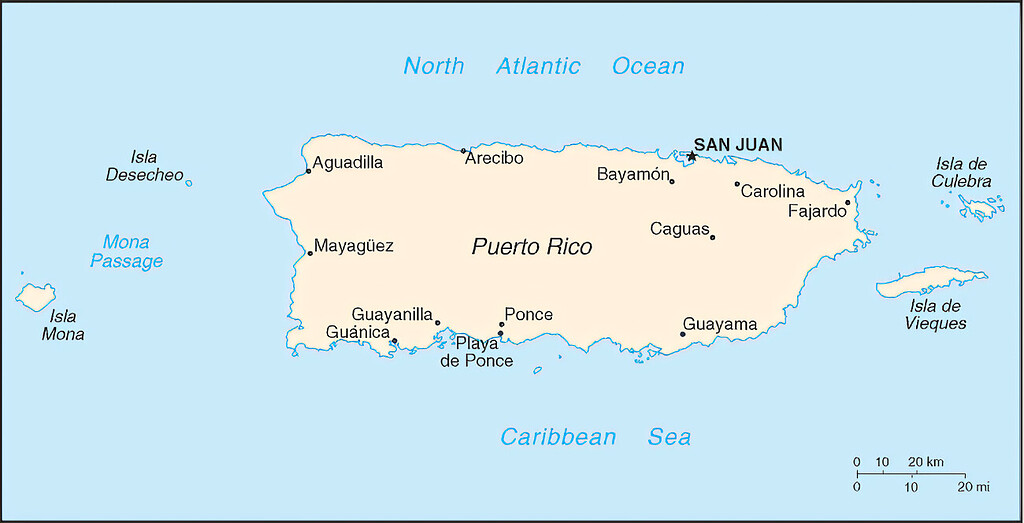 I’m considering. I sniff. I’m enjoying. But by the evening I feel as if I had just returned from a competition for eating underbaked and almost insipid apple pies: my belly is full of impressions, but they have not yet been digested. Didn’t settle down. They need time. Moreover, the residential areas of Puerto Rico coexist with royal luxury here – sheer poverty and crime. And it’s difficult to just take it and digest it without special preparation. Well, or did it seem to me? nine0003
I’m considering. I sniff. I’m enjoying. But by the evening I feel as if I had just returned from a competition for eating underbaked and almost insipid apple pies: my belly is full of impressions, but they have not yet been digested. Didn’t settle down. They need time. Moreover, the residential areas of Puerto Rico coexist with royal luxury here – sheer poverty and crime. And it’s difficult to just take it and digest it without special preparation. Well, or did it seem to me? nine0003
The narrowest house I’ve ever seen is everything between the balconies, above the door where the owner of the house is standing. Happy owner!
Local law enforcement officer. There are many police officers here, and they are very friendly
The locals are never in a hurry
A merchant with an indelible smile on his face
It’s impossible to walk with your head down here: you can’t take your eyes off other balconies
Hand-painted cheap Chinese men’s hats for a hundred American bucks apiece.
 (The Puerto
(The Puerto